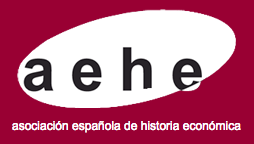Functional distribution of income in Spain (1914–1959): a proposal of analysis
DOI:
https://doi.org/10.1016/S1698-6989(06)70269-7Keywords:
Income distribution, Wages, Profits, Spanish economy, Francoism, 20th Century, N34, N44, D33Abstract
The analysis of the functional distribution of income in Spain from a historical perspective has created many obstacles to historiography due to the lack of statistical sources. The main objective of this research is to offer a new quantitative tool which lets empirically test many arguments sustained in this field —with little statistical support— until this moment. The proposed indicator is defined as the ratio between the income corresponding to the industrial workers and the enterprise profits in Spain from 1914 to 1959. Its long-term behaviour identifies, firstly, some interesting trends on the distributive guidelines in the Spanish economy before and after the Civil War. Secondly, the quantitative evidence reveals that the capital income was clearly favoured in the post-War period at the same time as the labour income was clearly damaged. As a consequence, the prevailing distributive pattern in this economy over the course of the pre-War decades was modified.Downloads
Downloads
How to Cite
Issue
Section
License
Aquellos autores/as que tengan publicaciones con esta revista, aceptan los términos siguientes
- Los autores/as conservarán sus derechos de autor y garantizarán a la revista el derecho de primera publicación de su obra, el cuál estará simultáneamente sujeto a la Licencia de reconocimiento de Creative Commons Reconocimiento-No comercial-Sin obra derivada 4.0 Internacional que permite a terceros compartir la obra siempre que se indique su autor y su primera publicación esta revista, y no permite hacer uso comercial de la misma ni tampoco obras derivadas.
- Los autores/as podrán adoptar otros acuerdos de licencia no exclusiva de distribución de la versión de la obra publicada (p. ej.: depositarla en un archivo telemático institucional o publicarla en un volumen monográfico) siempre que se indique la publicación inicial en esta revista.
Plagio y fraude científico
La publicación de un trabajo que atente contra los derechos de propiedad intelectual será responsabilidad de los autores/as, que serán los que asuman los conflictos que pudieran tener lugar por razones de derechos de autor. Los conflictos más importantes pueden darse por la comisión de plagios y fraudes científicos.
Se entiende por plagio:
- Presentar el trabajo ajeno como propio.
- Adoptar palabras o ideas de otros autores sin el debido reconocimiento.
- No emplear las comillas u otro formato distintivo en una cita literal.
- Dar información incorrecta sobre la verdadera fuente de una cita.
- El parafraseo de una fuente sin mencionar la fuente.
- El parafraseo abusivo, incluso si se menciona la fuente.
Las prácticas constitutivas de fraude científico son las siguientes:
- Fabricación, falsificación u omisión de datos y plagio.
- Publicación duplicada.
- Conflictos de autoría.





